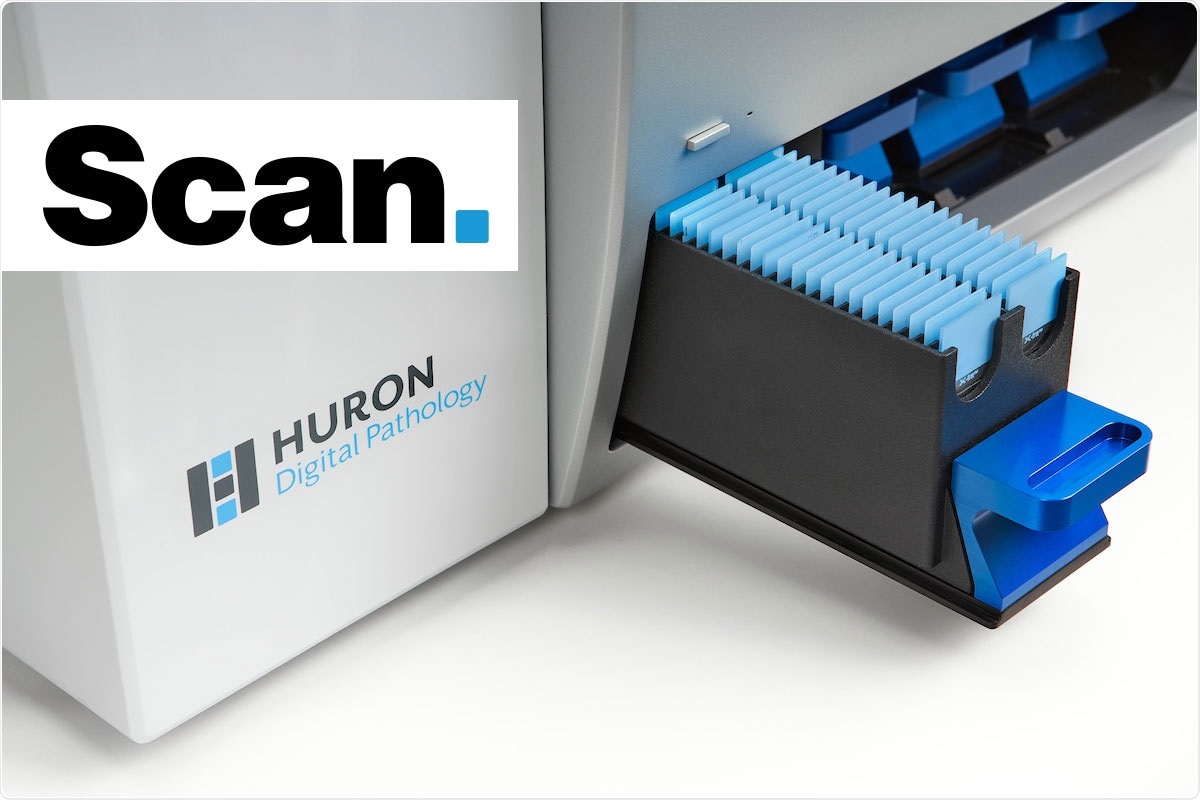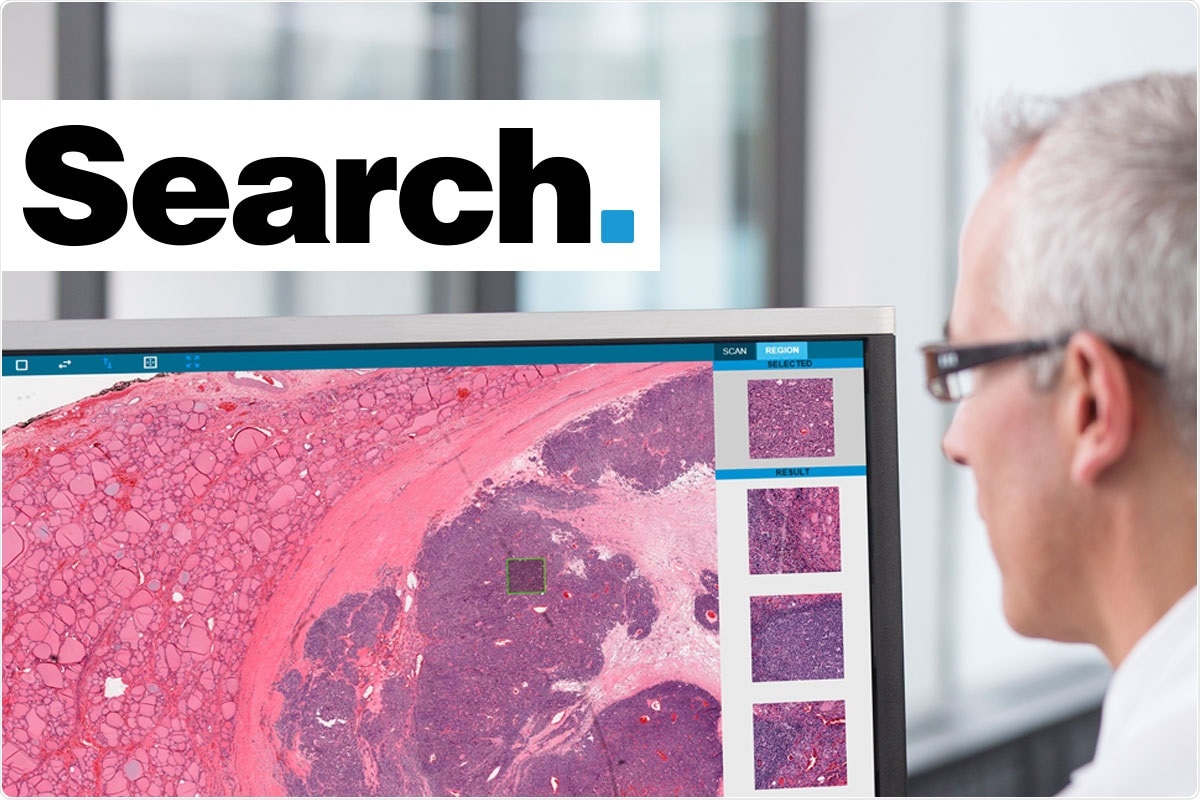An interview with Patrick Myles, CEO, Huron Digital Pathology conducted by Bruce Hall from Dell Technologies Healthcare PowerChat Podcast
Listen to the two part Dell Technologies Healthcare PowerChat Podcast with Patrick Myles.
How would you define digital pathology and what's driving the need for digital pathology adoption?
It really starts with a couple of key factors that are impacting the practice of pathology. First the Western world has an aging demographic and there is a higher incidence of disease worldwide that's creating a lot of demand for diagnostic and pathology services.
At the same time, there is a growing and severe shortage of pathologists. There are fewer pathologists that are graduating and moving into the field, at the same time more current pathologists are retiring. This is becoming a pinch point that'll only get worse over the next couple of years. It's an area that needs to be developed and where technology can play an important role.
In general, with digital pathology we're seeing a replacement of microscope base imaging to digital slides that can be viewed on a computer screen, shared with colleagues and analytics can be applied to aid in the diagnosis and accelerate various research and educational processes.
There's a similar movement that happened in radiology a number of years ago, but pathology has its own challenges, not the least of which is the enormous size of the dataset. Having been in the digital imaging for over 20 years, I see digital pathology has a glacial movement, but it'll move towards digital workflows just as in other parts of medical practice.
In addition to managing the large volumes of data, please take us through the top challenges of adopting a digital pathology solution.
Let me start from a macro level. In the next five years we're going to see hundreds of millions of slides digitized. So the question is how do you manage that level of data, particularly unstructured data, and how do you store it? How do you search through it? This translates into potentially exabytes of unstructured data. Each one of these whole slide images can be a gigabyte in size or larger, which presents its own challenges.
At the same time there's tens of millions of pathology reports that are going to be generated. One of the challenges of that, even though much of it is text-based is that often those pathology reports are being stored, never to be revisited. There's a lot of knowledge that's contained in those pathology reports. Imagine if we could make use of that information to help inform new decisions in terms of diagnosis?
There's a huge change management aspect to this. How do we make it easier for pathologists to adopt new technology? There's certainly a fear factor with any type of digital technology, but when you add in AI and the fear of the robots taking over, there's a real challenge there. We need to be able to bring pathologists into adopting these new tools instead of being afraid of it.
A lot of the early adopters are pathologists who've really been pioneering, but more and more there's a requirement to partner with the IT professionals, who are looking for opportunities to add value to their organizations and if we can find ways to help IT in pathology tackle this challenge, it'll be much easier from adoption standpoint.
How is Huron Digital Pathology addressing these challenges?
We're bringing what we think is a very unique solution to the market that combines the familiar aspects of digital pathology, the digitization of whole slides and we're adding a surprising element, which is a first ever image search engine that is able to index large digital slide archives, allowing the slides to be instantly searched on the basis of their image content.
We call this solution Scan Index Search, which is basically the three things that we do very, very well. Our hardware helps create the massive archives, that the scanning side, then our software indexes and tags that data so it can be easily searched. That's the index and the search part of it.
Huron Scan Index Search
From an IT standpoint, we're bringing intelligence to the unstructured image data, which is important because there is so much data. Through image search, what we're doing is connecting pathologists to the knowledge contained in the world's pathology reports.
Let me give an example. Say we have a pathologist who's working on a difficult case and they need to consult with their colleagues. With our solution they can simply search for slides within their hospital or hospital network that look similar to what they're looking at and then read the associated pathology report that had been written by their colleagues. We call this virtual peer review. This addresses the increasingly short supply of pathologists, particularly the subspecialty experts. We see our solution as an enabling platform that addresses many of the challenges in pathology.
Some of our technology relies on artificial intelligence and the reality is much of the AI based solutions that are coming to the market, both in pathology and other areas, rely on a black box to make determination of benign or malignant. From a pathologist perspective, this can be quite concerning that the black box is making a decision and not the pathologist. With our solution, the pathologist is always making the diagnosis at the end and they're relying on the expertise of their colleagues who have made similar diagnoses. That is a very pathologist-centric, pathologist friendly approach that resonates well and we hope will increase adoption for digital pathology.
One of the coolest things about being involved in digital pathology is that we're really helping the world by improving diagnosis. I really like the potential for the technology, particularly AI based technology, to help bring democracy to pathology. If we can connect pathologists in remote areas to the expertise of colleagues in more urban centers, I think that's a fantastic endeavor.
Can you tell us about Huron's legacy and how the solution evolved?
We've been involved in digital pathology for a dozen years now. We've been developing high-performance digital microscopes, whole slide scanners, and we've really done a good job of developing instruments that have been used in high profile research-oriented areas. We have a good pedigree in developing those solutions.

Image credit: Huron Digital Pathology
Over the past five years we focused more and more on the clinical side of things. We've developed our scanners to be easier to use and we've done a good job of making sure, from a regulatory standpoint, that everything is in good shape.
Alongside that we've also evolved our product offering. Three and a half years ago we started to develop technology on the image search in collaboration with a lab at the University of Waterloo where this image search software component complements the hardware that we have in place. We recognized that we needed to provide a platform that goes beyond simply putting digital images on a screen and allowing them to be shared.
This idea of bringing intelligence to this unstructured data to connect pathologists to the vast knowledge contained in the world's pathology reports, and to be able to do that on the scanner or independent of the scanner with third party images, has been a huge improvement and increase to the applicability of not only our product, but the business case for digital pathology in general.
Can you give an overview of Huron Digital Pathology’s partnership with Dell?
I met Dave Diamond from Dell about two years ago at a digital pathology conference, and I've been working with the team at Dell more intensely over the past year. We have a lot in common as both organizations see the potential for digitization in pathology, and the need to offer solutions that solve problems in pathology. We're both keen on bringing intelligence to that vast amount of unstructured data that's generated in pathology.
The partnership with Dell has allowed us to develop a reference architecture of pathology, and we've been meeting with IT and pathology leaders around the world to help share the Huron Digital Pathology solution that sits on Dell's computer and storage solution.
From a practical standpoint the whole slide images that we produce are on Isilon storage. When we do the tagging and indexing, we do that natively on our scanner in real time but if they're third party images, we do that computation on Dell GPU servers. The combination of the partnership with Dell brings IT professionals to the digital pathology table, allowing them to add a lot of value to their institutions.

Image credit: Huron Digital Pathology
How does your digital pathology Scan Index Search solution coexist with other vendors in this market?
The approach we take is that we want to be wherever there are glass slides that need to be digitized or digital slides that have already been digitized, which means that our product can include our scanner hardware, but it is not mandatory. There are numerous benefits of being able to combine scanning and indexing natively on the scanner, particularly for quality control within labs.
However, we recognize that our solution can also exist purely as a software solution, where the indexing and search can take place on third party platforms with third party images. Generally, digital pathology exists in an ecosystem where there are scanner vendors, image management systems and analytics programs etc. We've existed within this ecosystem for quite a while, and our scanners output a non-proprietary file format so that they play quite nicely with just about any third-party vendor’s hardware.
Now, with the addition of the image search, we see the potential to evolve and embed our search engine into third party software and allow third parties to have a unique differentiator, whether products could be lab workflow solutions, image management, image viewers, or reporting software. We want to be able to coexist and we want to be everywhere where there are glass or digital slides.

Image credit: Huron Digital Pathology
We're starting to see a movement right now of some of the traditional PACS enterprise imaging vendors, that are already serving the radiology and cardiology space. Some of these vendors are now making their way into digital pathology because they're looking at pathology as adding that extra ‘ology’ to the other ‘ologies’ within their platform. We see this as an encouraging development because digital pathology can now join those other ‘ologies’.
What's your advice to healthcare providers and their IT departments looking to begin down the path of digital pathology? Or to those looking to accelerate that journey?
I think it really depends in a lot of cases on the journey, who's on the journey, and where they are. To give you an example, many projects start with pathologists. These are, and have been for a number of years, pioneers who are looking to bring these digital tools in order to advance the practice of pathology.
In some cases, they could be implementing a first scanner at a facility, or it could be a full rollout of replacing microscopes with digital solutions. It could also be folks that are involved in bioinformatics where they want to be able to apply advanced algorithms, which is now what you call the AI, and that's driving a lot of demand for digital. Finally, it's increasingly the IT function, that's where the IT folks are running these projects.
From a very high level it's important that any type of solution is an open solution, with open architecture. The customer is in charge here and being able to mix and match is the first and most important part of choosing a digital pathology solution.
The majority of users are looking for the classic digital pathology solution. The ability to digitize a slide, put it on a screen, and then be able to share the images and do some analytics. However, in a lot of cases, each of those groups, pathologists, informaticists, or IT professionals, they're looking for a business case to move from microscopes to digital. We try to focus on the idea of offering a unique differentiator that provides that business case for digital pathology.
Bringing intelligence to the unstructured data is a silver bullet for IT because it helps add a lot of value to their organizations by bringing a unique perspective that may not come from a pathologist or bioinformaticist. It's a unique differentiator and if that can be deployed in an open system, the likelihood of success of having IT partner with the pathologist and the bioinformaticist, then you're going to have a successful deployment.
Where can readers find more information
About Patrick Myles
Patrick Myles is the CEO of Huron Digital Pathology, a Canadian healthcare company on a mission to connect pathologists to the vast knowledge of their colleagues through image search.
Prior to joining Huron in 2014, Patrick was Vice President of Business Development at Teledyne DALSA, an international manufacturer of digital imaging components.
Patrick has a Bachelor of Arts degree from the University of Waterloo and an MBA from Wilfrid Laurier University. He is an advisory council member of the Digital Pathology Association.